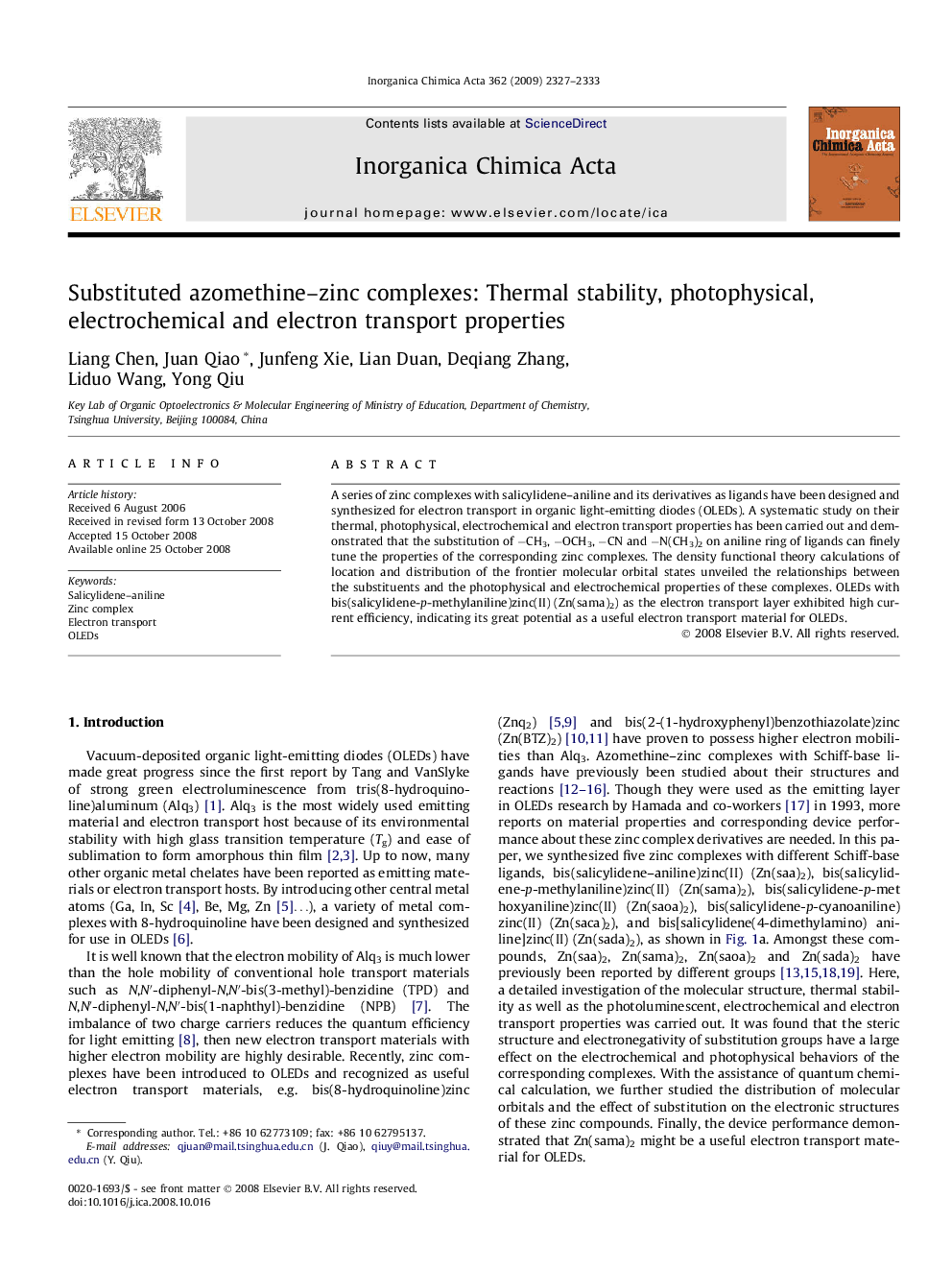| Article ID | Journal | Published Year | Pages | File Type |
|---|---|---|---|---|
| 1309859 | Inorganica Chimica Acta | 2009 | 7 Pages |
A series of zinc complexes with salicylidene–aniline and its derivatives as ligands have been designed and synthesized for electron transport in organic light-emitting diodes (OLEDs). A systematic study on their thermal, photophysical, electrochemical and electron transport properties has been carried out and demonstrated that the substitution of −CH3, −OCH3, −CN and −N(CH3)2 on aniline ring of ligands can finely tune the properties of the corresponding zinc complexes. The density functional theory calculations of location and distribution of the frontier molecular orbital states unveiled the relationships between the substituents and the photophysical and electrochemical properties of these complexes. OLEDs with bis(salicylidene-p-methylaniline)zinc(II) (Zn(sama)2) as the electron transport layer exhibited high current efficiency, indicating its great potential as a useful electron transport material for OLEDs.
Graphical abstractA series of zinc complexes with salicylidene–aniline derivatives as ligands have been designed and synthesized. A systematic study on their thermal, photophysical, electrochemical and electron transport properties has been carried out and demonstrated that the substitution on aniline ring of ligands can finely tune the properties of corresponding complexes.Figure optionsDownload full-size imageDownload as PowerPoint slide
